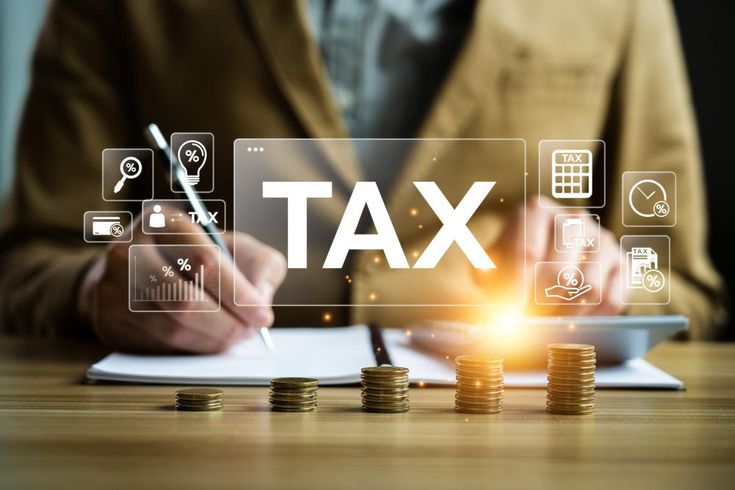Most people face this choice at some point. Do you use extra cash to clear debt or to buy investments? The right answer depends on numbers. And taxes matter.

This guide gives a clear, step‑by‑step framework. Use it to make a tax‑smart choice for your money.
Quick answer: If your after‑tax expected investment return is higher than the effective interest rate on your debt, investing can make sense. But always get the employer match, keep a small emergency fund, and pay off high‑interest debt first.
Why taxes change the decision
Taxes lower the real return you get from investments. They do not lower the rate you pay on most debt. That means an investment that looks better on paper may be worse after taxes.
Simple rule: Compare the debt interest rate to the investment return after taxes and fees. If the after‑tax return is less than the loan rate, pay the loan.
A short tax‑smart checklist (do these first)
- Get your employer 401(k) match. This is free money and usually the best first move.
- Build a small emergency fund. $1,000 or one month of expenses to avoid new debt from shocks.
- Pay high‑interest consumer debt. Credit cards and payday loans usually cost more than any reasonable investment return.
- Contribute to tax‑advantaged accounts. IRAs, 401(k)s, or their local equivalents offer tax savings that shift the math in favor of investing.
Each item has tax and behavioral benefits. Follow them in order unless you have a special reason not to.
Step 1 — Compare rates the right way

- Debt side: Use the effective interest rate. For credit cards, that’s the APR. For mortgages, use the post‑insurance, post‑fees rate.
- Investment side: Use expected after‑tax return. For example, if you expect a 7% market return and you pay 20% tax on gains, your after‑tax return is roughly
7% x (1 − 0.20) = 5.6%.
Example: A 4% mortgage vs. a 6% expected pre‑tax investment return. After a 20% tax hit, the investment return falls to ~4.8%. That is still slightly higher than 4% — so investing could win. But if your tax rate is higher, math shifts.
Note: Don’t forget fees, timing, and volatility. Investments aren’t guaranteed the way debt repayment is.
Step 2 — Special rules to always remember
- Employer match = invest first. If your employer matches 50% on the first 6% you contribute, that match is an immediate return. Capture it before aggressive debt pay‑down.
- Tax‑advantaged accounts matter. Pre‑tax accounts lower taxable income now. Roth accounts give tax‑free growth later. Both can tilt the decision.
- Mortgage interest & student loans. Some interest is deductible or eligible for credits. That lowers the effective cost of the loan and can make investing slightly more attractive. Check rules for your country.
Step 3 — Debt types and how to treat them
- High‑interest consumer debt (15%+): Pay this off now. The guaranteed saving equals the interest rate.
- Moderate personal loans (6%–12%): Run the numbers. If you can earn a reliable after‑tax return higher than the loan rate, investing might win — but pay attention to risk.
- Mortgages and low‑rate debt (≤5%): Often a good place to invest instead — especially in tax‑efficient accounts — provided you have an emergency fund.
- Student loans: Treat based on interest rate and tax benefits. Income‑driven repayment plans and forgiveness programs complicate the decision.
Step 4 — Behavioral and safety factors
Numbers matter. But so do stress, sleep, and how you handle money.
- Paying debt gives a guaranteed return — the interest you avoid. That can be mentally freeing.
- Investing can lead to more net worth long‑term. But markets fall. If debt causes anxiety, paying it down may be the wiser move for you.
A simple decision flow
- Do you get an employer match? If yes, contribute enough to get the full match now.
- Do you have high‑interest debt? If yes, prioritize paying it down.
- Do you have a 3‑6 month emergency fund? If not, save to that level next.
- Are your loans low interest and tax‑advantaged? If yes, consider investing in tax‑efficient accounts.
- Recalculate every year or when tax rules change.
Simple numeric example
- Scenario A: $5,000 credit card at 20% APR. Employer offers 50% match on 401(k) up to 6% — you make $60,000 a year. Which wins?
- Stop here and pay off the credit card. The 20% guaranteed saving beats almost any after‑tax market return.
- Scenario B: $150,000 mortgage at 4% vs. expected market return 7%. You’re in the 22% tax bracket, which reduces your after‑tax market return. After tax and fees, the investment return may fall close to the mortgage rate. This is a judgment call — but many choose to invest, while making extra principal payments as they can.
Tax nuances to watch
- Interest is taxed at ordinary income rates. So investment interest and most income is taxable at your marginal rate. Long‑term capital gains and qualified dividends often enjoy lower rates — this helps after‑tax returns.
- Deductions and credits (mortgage interest, student loan interest, retirement contributions) change the effective cost of debt and the value of investments. Check local tax law or consult a tax professional.
- The Proven Strategy Behind Smarter, More Confident Financial Planning
- FIRE Movement 101: Can You Really Retire Early?
- How Delaying Your Retirement Savings Can Cost You Big
- Think Your Government Pension Is Enough? Here’s Why It’s Risky
- Retirement Planning: How to Win Big in Your 20s—and Catch Up in Your 40s
FAQ (for page and schema)
Q: Should I always pay off debt before investing?
A: No. If debt has a low effective rate and you can access tax‑advantaged investments — or capture an employer match — investing can be the better move.
Q: Does mortgage interest change the answer?
A: Yes. Mortgage interest may be partially deductible in some tax systems. That reduces the effective cost of the loan. Adjust the math for deductions.
Q: What about tax‑advantaged accounts?
A: They often make investing more attractive because of tax savings. Prioritize accounts with employer match and high tax efficiency.





